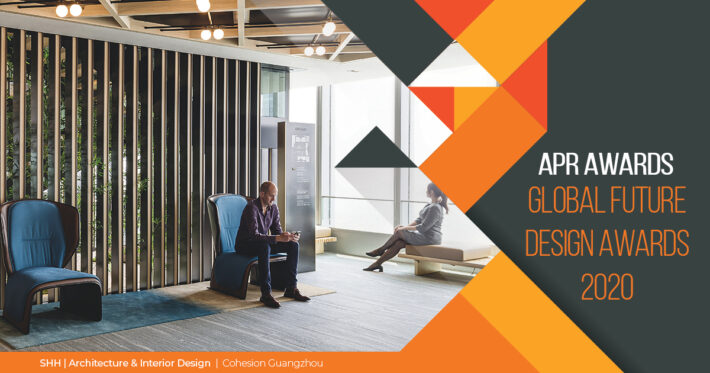Cohesion Guangzhou is a new hybrid co-working serviced office, targeting the city’s international business market. SHH was asked to introduce a design for a new way of working in Guangzhou and were appointed to completely question the standard approach to serviced office workspaces locally, which are largely compartmentalised, lacking in character and work against the potential for chance encounters, networking and collaboration between businesses.
Winner- Global Future Design Awards 2020
Firm | SHH | Architecture & Interior Design
Architect/Designer | SHH | Architecture & Interior Design
Category | Corporate Interior Built
Team | SHH | Architecture & Interior Design
Country | United Kingdom
Photographer/Copyright | ©SHH | Architecture & Interior Design
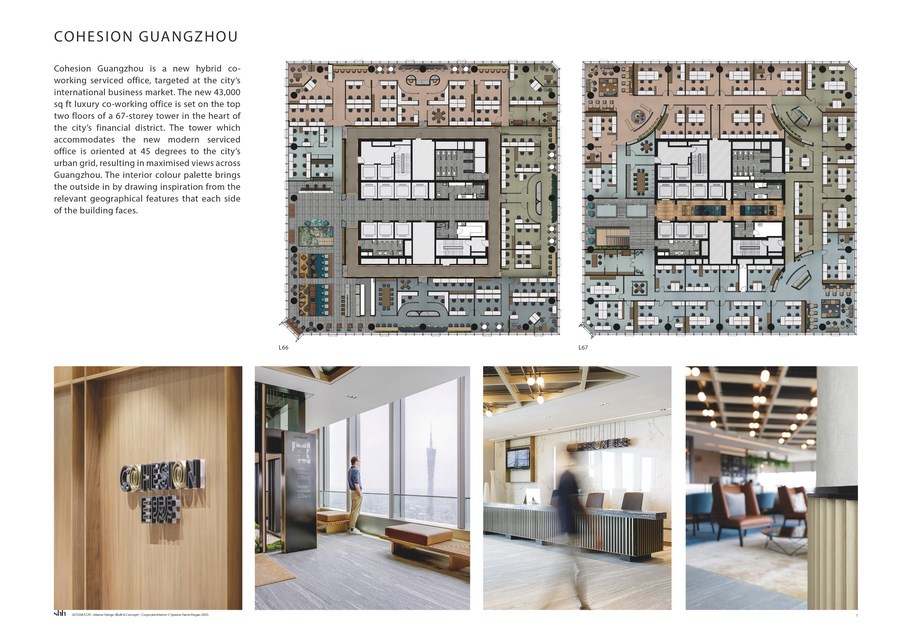

©SHH | Architecture & Interior Design 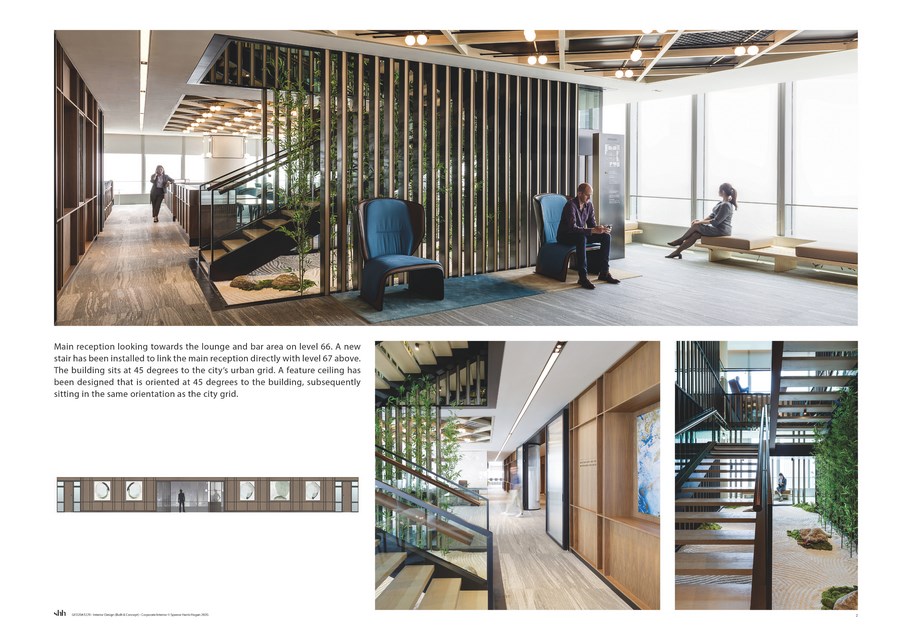
©SHH | Architecture & Interior Design 
©SHH | Architecture & Interior Design 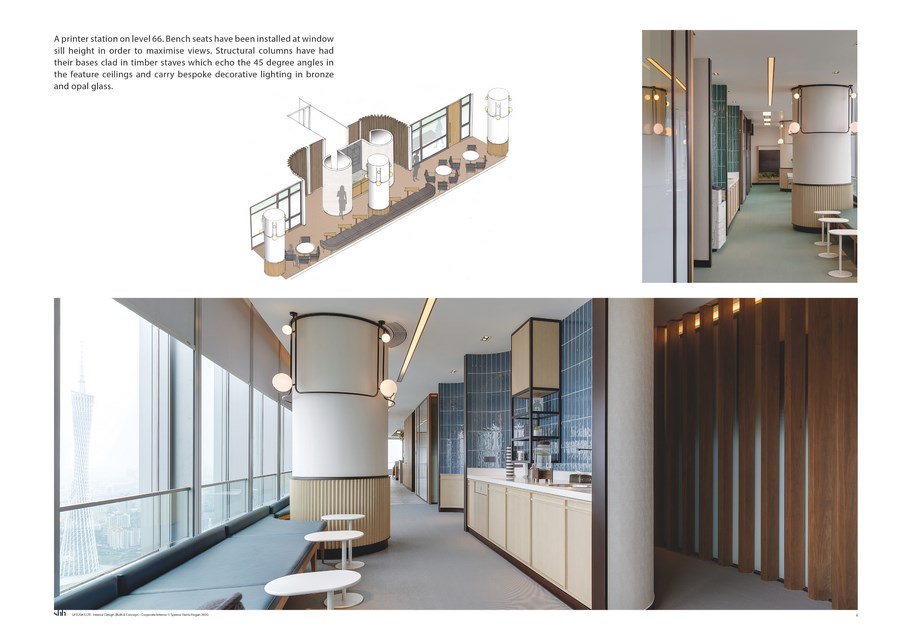
©SHH | Architecture & Interior Design 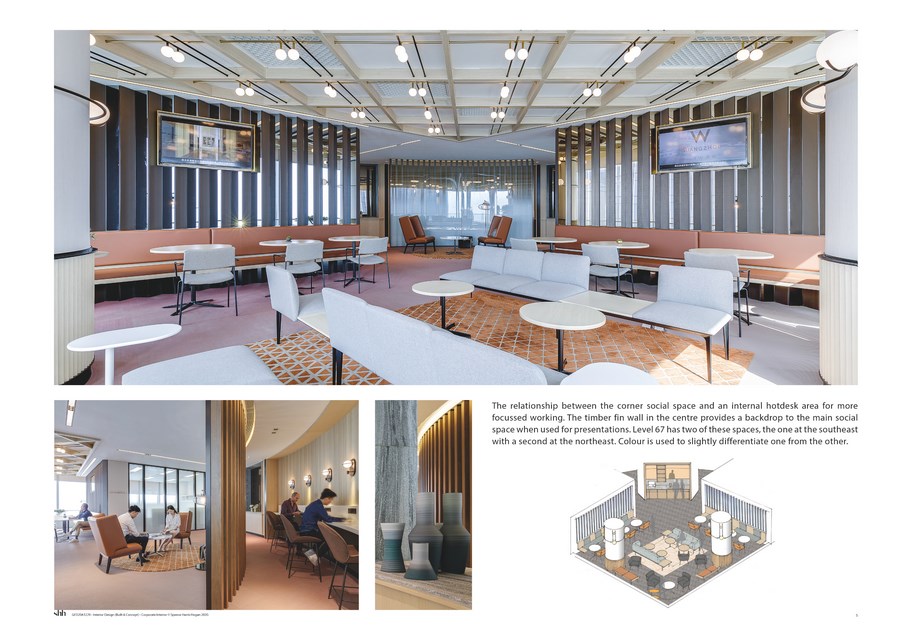
©SHH | Architecture & Interior Design 
©SHH | Architecture & Interior Design
The project presented SHH with some particular challenges: how to efficiently balance the provision of cellular offices spaces to social spaces; how to maximise occupancy and the ability to generate revenue without impacting on the quality of spatial experience; how to allow the penetration of natural daylight into all cellular offices including those deep within the building. The final space plan resulted in elements of symmetry and repetition with long circulation routes. Subsequently wayfinding and orientation had to be effectively addressed.
The tower Cohesion is oriented at 45 degrees to the city’s urban grid. SHH introduced design features that refer back to the orientation of the urban grid, an example being the feature ceilings. These are at 45 degrees to the spaces that bound them but are in fact parallel and perpendicular to the grid outside the building.
The orientation of the building maximised views across Guangzhou and towards local geographical features, each of which SHH drew upon to inform the internal colour palette. The view to the northwest looks towards Baiyun Mountain, so grey and earthy tones have been used throughout the interiors in that quarter of the building, while the northeast looks out to Tianluhu Forest Park so greens were the main colours used in that quarter. The southeast looks towards South China Sea, so deep blues dominate these interiors, and the southwest view looks out to the Pearl River, bringing in teal shades. Taking materials and colours from each of the four directions, then applying these to each relevant quarter of the building creates a colour-coding device that can be applied to finishes and way-finding signage, aiding orientation.
Communication between the two floors was vital. Added to this the client requested a European-style openness for networking and collaboration but with sensitivity shown to the local requirements of Feng Shui. Reconciling these was achieved in creating a new staircase connecting the main reception on level 66 to the spaces on level 67, influencing its position and the maintenance of specific views out of the building, its visibility or not from certain entrance points, and how open to office space it was.
Level 66, hosting the main reception, provides shared informal meeting and working zones, formal boardroom, meeting rooms, printing areas, hot desk zones, and cellular offices sized to accommodate two to ten people. Level 67 offers similar office use with an additional relaxation zone for massages and virtual reality experiences, along with executive level private offices.
At the southeast corner of level 66, with views towards the river and Canton Tower, a valuable social space has been designed, intended for casual working and informal meetings, with the potential to be transformed into a space for large group presentations and networking events.


